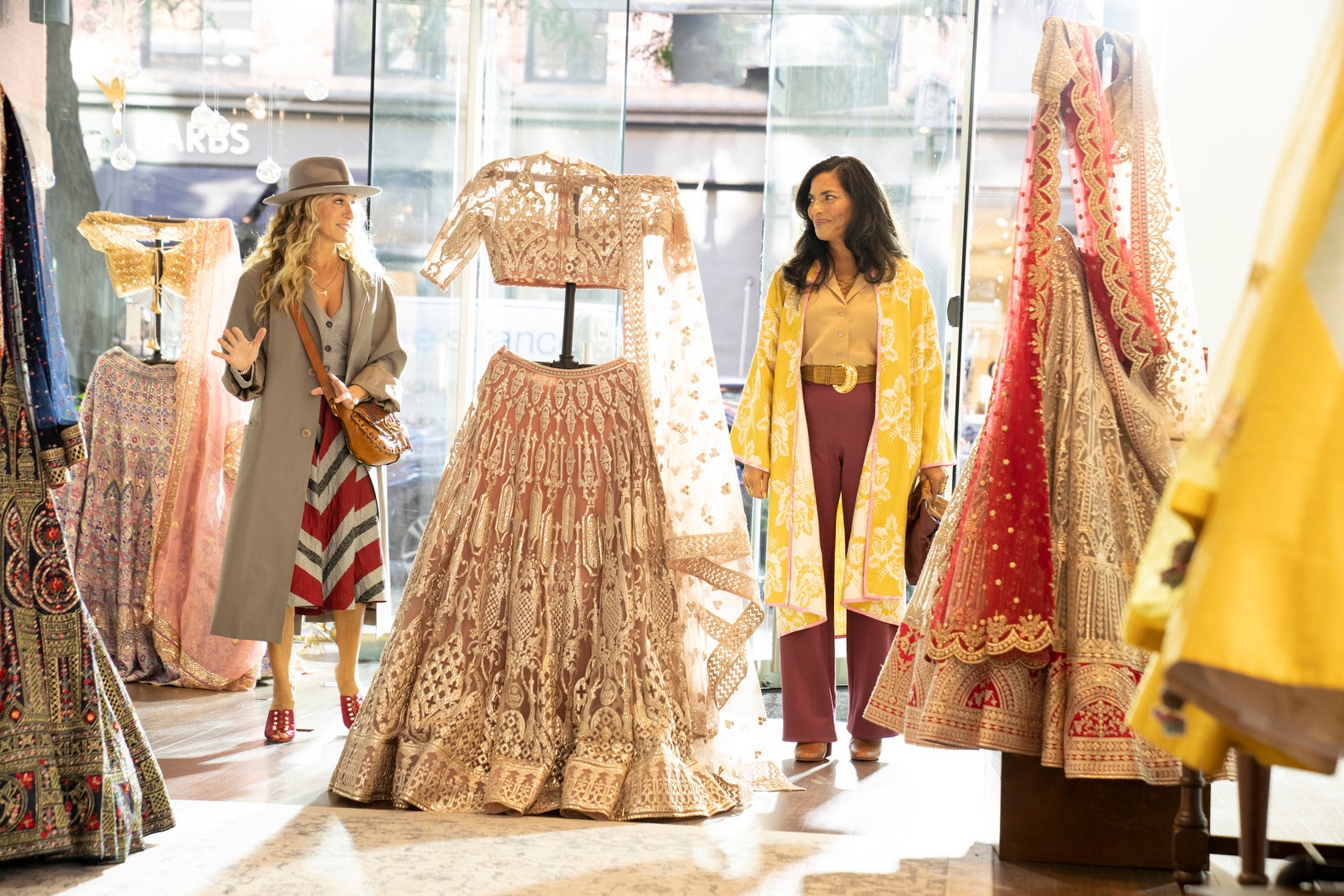‘Can we get any more clichéd?’ Social media users criticise And Just Like That... Diwali episode
Carrie attends a party at Seema’s house wearing a lehenga, not a sari

Your support helps us to tell the story
From reproductive rights to climate change to Big Tech, The Independent is on the ground when the story is developing. Whether it's investigating the financials of Elon Musk's pro-Trump PAC or producing our latest documentary, 'The A Word', which shines a light on the American women fighting for reproductive rights, we know how important it is to parse out the facts from the messaging.
At such a critical moment in US history, we need reporters on the ground. Your donation allows us to keep sending journalists to speak to both sides of the story.
The Independent is trusted by Americans across the entire political spectrum. And unlike many other quality news outlets, we choose not to lock Americans out of our reporting and analysis with paywalls. We believe quality journalism should be available to everyone, paid for by those who can afford it.
Your support makes all the difference.Social media users have criticised the latest episode of And Just Like That for cultural misappropriation and perpetuating south Asian stereotypes.
The latest episode of the Sex and the City reboot, titled Diwali, sees protagonist Carrie Bradshaw accompany her new friend, Seema Patel, on a shopping trip to buy an outfit for the festival.
Diwali, also known as the Festival of Lights, is one of the major religious celebrations for Hindus, Sikhs and Jains.
Bradshaw also meets Patel’s parents, who question her about their daughter’s made-up boyfriend – an affront to stop them badgering Patel about getting married.

Twitter users quickly pointed out several of the episode’s shortfalls.
Many were in disbelief that Bradshaw’s character had little knowledge of Diwali and needed to be educated about the festival by Patel.
“This show features the last white woman in New Yok who doesn’t know what Diwali is,” one user said.
Another wrote: “Seema is going to explain Diwali to Carrie as if there are not a gazillion Desis living in New York City.”
On their shopping trip to find Diwali outfits, Patel and Bradshaw enter a “sari shop” which is full of tradition south Asian lehengas.
A lehenga, which comes in many different styles, is an ankle-length skirt which can be worn with a long, short or cropped blouse.
A sari is a long piece of material which is wrapped over a blouse, across the shoulders, around the waist and over the legs.
The word “lehenga” isn’t used by either of the characters, even though Bradshaw later attends the Diwali party wearing a full-skirted Falguni Shane lehenga and choli (a cropped blouse) in the style “Peacock”.
“So, they are going ‘sari’ shopping in a store that only has lehengas on the racks?” one user wrote.
“Diwali party scene and Carrie is definitely not wearing a sari. She is wearing a lehnga that is gorgeous but too much for this small party,” they added.
Another said: “Putting Carrie in a lehenga and calling it cultural appreciation is fine but calling the lehenga a sari is unforgivable.”
The episode also plays out a stereotype commonly associated with south Asian families – that many parents of the diaspora are fixated on marriage.
Vogue Indiawriter Arushi Sinha described the scene where Patel’s parents question Bradshaw about their daughter’s boyfriend as “stale and badly thought-out”.
“If you’re only going to show a narrow slice of an Indian character’s life, it is probably not a good idea to lean so heavily into mass-produced stereotypes that do not add depth or dimension to the characters in question,” Sinha wrote.
One Twitter user described the stereotype as outdated and clichéd.
“Can we get any more clichéd? Trust me, parents of that diaspora from the 1960s would really not care about getting Seema hitched. And certainly, not at this point,” they said.
Join our commenting forum
Join thought-provoking conversations, follow other Independent readers and see their replies
Comments